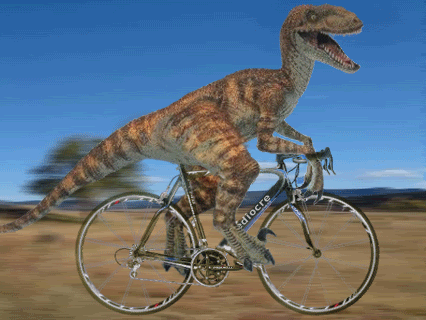
Miss Adwell's
Lesson Designs


Rationale: The goal of this lesson is to help children identify the phoneme /d/, expressed by the letter D. Students will learn to recognize /d/ in spoken words by meaningful representation (the thud of footsteps) and the letter symbol D, practice finding /d/ in words, and apply phoneme awareness with /d/ in phonetic cue reading by distinguishing rhyming letter words from beginning letters.
Materials: Primary paper and pencil, coloring utensils, poster that has tongue tickler: Daniel the dinosaur didn’t deliver desserts to the dangerous duck, cards that say “DOG,” “DIG,” “DEEP,” and “DUCK,” assessment sheet linked in resources, and the book: Doc in the Fog (Phonics Readers- Book 8)
Procedures:
1.) Say, “Our language is just like a secret code. The letters stand for the sounds we make when we say words by moving our mouths, like I’m doing right now! Today, we’re going to be working on spotting when our mouth makes the /d/ sound. We spell the /d/ sound with the letter D, which looks like the belly of a huge dinosaur! When we make the /d/ sound, it’s like the thud of big dinosaur feet getting closer and closer.”
2.) Say: “Alright, now we’re going to pretend our hands are the dino feet and stomp our hands making the footstep sounds. /d/, /d/, /d/. When we say /d/, see where your tongue is? At first, it’s at the top of your mouth, then it moves out of the way so you can say /d/. Now you try it slowly.”
3.) Say: “Now I’m going to try something. I’m going to find the /d/ sound in the word ‘hand’ so you can see how to do it. I’m going to say ‘hand’ really slowly and see if I can hear the dino’s footsteps. H-a-n-d. Hmmm… H-h-h-a-a-n-d-d-d. Aha! There it is, right at the end! /d/, /d/, /d/. I can feel the tip of my tongue right at the top of my mouth before the /d/ sound comes out!
4.) Say: “Alright, now I’m going to tell you a little story. Daniel was a big, scary dinosaur, and nothing ever made him afraid, except for one animal, the tiny, fluffy duck. That sounds silly, but the duck was much more dangerous than you would think. He made Daniel give him his desserts every day at lunch, until one day, Daniel had decided he’d had enough. The next day, Daniel the dinosaur didn’t deliver desserts to the dangerous duck. This is going to be our tongue-tickler for /d/. Let’s say it together (reading off the chart), ‘Daniel the dinosaur didn’t deliver desserts to the dangerous duck.’ Now, this time we’re going to stretch out the /d/ sounds in every word. Ready? D-D-Daniel the d-d-dinosaur d-d-didn’t d-d-deliver d-d-desserts to the d-d-dangerous d-d-duck. Now this last time we’re going to cut off all the /d/ footstep sounds. D-aniel the d-inosaur d-i-d-n’t d-eliver d-esserts to the d-angerous d-uck.
5.) (Have students take out primary paper and pencil) Say: “When we write and read the sound /d/, we use the letter D. Let’s try writing a lowercase d. This one’s tricky because it looks a little like a b, but when we make a d, we start by writing a lowercase c from the fence to the sidewalk. Then we connect the space in the c by drawing an l from the rooftop all the way down to the sidewalk, like this (demonstrates). Now, I want to see you try it, then if I give you a thumbs up, keep going until you have ten little d’s.”
6.) Check for Understanding- Say: “Now we’re going to see if you can find the /d/ sound in some words. Do you hear /d/ in eat or drink? Dentist or kitten? Carrot or bed? Alright, now time to see if you can watch my mouth make the /d/ sound in some words. Make our footstep sound if you hear the /d/ sound. Ready? Eddy’s dad sat at the red desk to do some dull work.
7.) Say: “Now we’re going to look at a book. This is called Doc in the Fog. Doc is a wizard that’s always using magic and transforming things.” (Turn to page 5) “Let’s see if we can find the /d/ sound. Remember to make the footstep sound every time you hear me read /d/.” (read page 5, drawing out /d/ sounds) “Now, what else could Doc transform that has /d/ in it, like a d-d-disk or d-d-dinner table? Write it down on your own and draw a picture of Doc’s magic transformation!”
8.) Show DOG and model how to decide if it’s dog or log: Remember: the D reminds us of those dino footsteps- /d/, /d/, /d/, so this word is d-d-dog. Now it’s your turn: DIG: fig or dig? DEEP: deep or keep? DUCK: luck or duck?
9.) To assess, hand out worksheet. Students write in letters that fit the words, then color only the pictures that have the /d/ sound it them. For additional assessment, call up students to read phonetic cues from Procedure 8 individually.
Resources:
Assessment Handouts-
http://www.kidzone.ws/kindergarten/d-begins2.htm
Bruce Murray, Brush Your Teeth With F-
http://www.auburn.edu/academic/education/reading_genie/sightings/murrayel.html
Katherine Johnson, D-D-Drum With D-
http://katcjohnson.wixsite.com/mysite/emergent-literacy
For more lesson plans, visit the Reading Genie
http://www.auburn.edu/academic/education/reading_genie/
Link to Reading Genie Horizons: